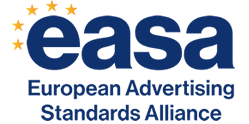EASA encourages marketing professionals to pay particular attention in their messaging to children and minors or when ads feature them.
All 26 national advertising codes enforced by the 28 self-regulatory organisations in Europe are based on the International Chamber of Commerce’s Advertising and Marketing Communications Code (ICC Code). The ICC Code contains several provisions regarding advertising to children. For starters, the international code defines children as individuals under the age of 12, with teens being any person between ages 13 through 17. Some SROs have set the age threshold at 14 for children. Though some SROs have not defined a specific threshold in their Codes, the age of 12 is the commonly accepted age limit, and some will refer to the ICC Code as a basis for definition. It’s important to note that the ICC Code’s and local SROs’ age thresholds come without prejudice to definitions in national or local legislation.
In the ICC Code, the following provisions related to children and advertising:
- article 20 ‘Children and teens’
- articles C5 ‘Respect for children’
- Chapter E ‘Children and teens’ running key topics such as exploitation of children’s incredulity or teens’ inexperience, avoidance of harm, and social value, to name just a few.
All European self-regulatory organisations (SROs) in the EASA membership have either developed additional rules aimed at protecting children or refer to the ICC’s code and framework guidance. These include recommendations to not advertise products to children that are deemed unsuitable, such as alcoholic beverages, gambling, or foods and drinks that are high in fat, sugar and salt – the latter category of rules may be coupled with a nutrient classification model or front-of-pack nutrition labelling systems, depending on the country.
Advertising self-regulatory organisations (SROs) regulate ad content across all media according to local rules, inspired by international standards, and which go beyond national and European legislation. SROs develop, implement, and enforce high content standards for specific products with stakeholders’ full support. The ultimate goal of collective ad self-regulation is to foster trust, which in turn helps create a trusted and mature competitive market. The exact type of ethical rules, guiding instruments, or standards that SROs develop is discussed and decided at local level with the concerned brands, both global and local ones.
In addition, ICC’s Framework for Responsible Food and Beverage Marketing Communications includes a specific part on responsible food marketing to children. This guidance paper has been developed by the International Chamber of Commerce and offers a detailed interpretation of the existing rules on food advertising.
The Audiovisual Media Services Directive 2010/13/EU (2018 version) includes rules for the protection of minors that apply to all audiovisual services. In particular, article 9.2 of the Directive exhort Member States and the Commission to encourage media service providers to develop codes of conduct regarding inappropriate audiovisual commercial communications for foods and drinks that are high in fat, sugar and salt, aired around or in children’s programmes. The local transposition of the AVMSD has led to recognition of local codes of conduct set up and managed by the local ad standards organisation (SRO). Other countries have implemented co-regulatory frameworks that include the wider relevant local food sector, including the SRO. The AVMSD’s transposition has therefore consolidated a strong regulatory framework in concert with national ad standards regulators and industry to allow for local nuances whilst building a harmonised level playing field.








